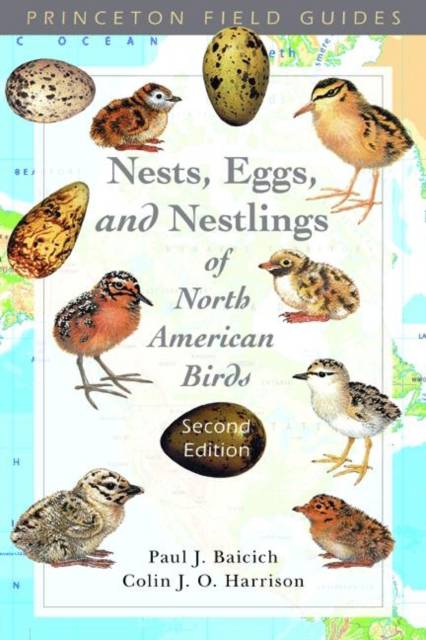
- Afhalen na 1 uur in een winkel met voorraad
- Gratis thuislevering in België vanaf € 30
- Ruim aanbod met 7 miljoen producten
- Afhalen na 1 uur in een winkel met voorraad
- Gratis thuislevering in België vanaf € 30
- Ruim aanbod met 7 miljoen producten
Omschrijving
Nests, Eggs, and Nestlings of North American Birds, Second Edition provides a thorough, species-by-species guide to the breeding biology of the birds of North America. Some 670 breeding species are described in full, covering the birds of a vast area, from the Arctic to the southern boundary of the continental United States. The main text presents complete basic information on the breeding cycle of each species, summarized in a natural sequence: nest habitat, nest-site, nest construction, breeding season, eggs, incubation and nesting and nestling period. More than 700 color and line illustrations provide valuable information on the identification of the nests, eggs, and nestlings of 597 species. The book covers perhaps the most fascinating aspects of North American bird life, their reproduction and the care of their young, essential elements in the survival of any species. The book summarizes all that is known of this crucial part of a bird's life cycle, and by omission, points to what is yet unknown and may yet be discovered by the scientific ornithologist and birder alike. If your fascination in the nests, eggs, and nestlings of North American birds centers on identifying them in the field, you will find this book essential. If conservation is also a concern, you will appreciate the value of understanding the breeding requirements and biology of even the most common of species. This book will prove invaluable whatever your interest in North American birds.
Key Features:- Describes nests, eggs, and nestlings and gives basic biological information on nesting and breeding biology
- Includes up-to-date coverage of all breeding species found in North America, including Alaska and Canada in one comprehensive volume
- Contains more than 700 color and line illustrations of nests, eggs, and nestlings
Species List by Family:
Specificaties
Betrokkenen
- Auteur(s):
- Uitgeverij:
Inhoud
- Aantal bladzijden:
- 347
- Taal:
- Engels
- Reeks:
- Reeksnummer:
- nr. 35
Eigenschappen
- Productcode (EAN):
- 9780691122953
- Verschijningsdatum:
- 12/06/2005
- Uitvoering:
- Paperback
- Formaat:
- Trade paperback (VS)
- Afmetingen:
- 152 mm x 229 mm
- Gewicht:
- 1088 g

Alleen bij Standaard Boekhandel
Beoordelingen
We publiceren alleen reviews die voldoen aan de voorwaarden voor reviews. Bekijk onze voorwaarden voor reviews.








